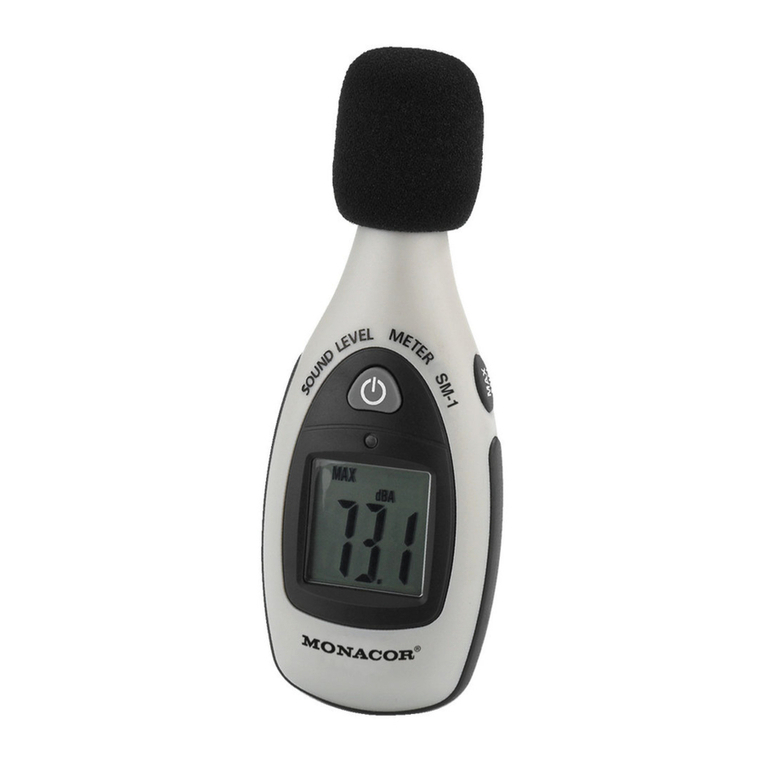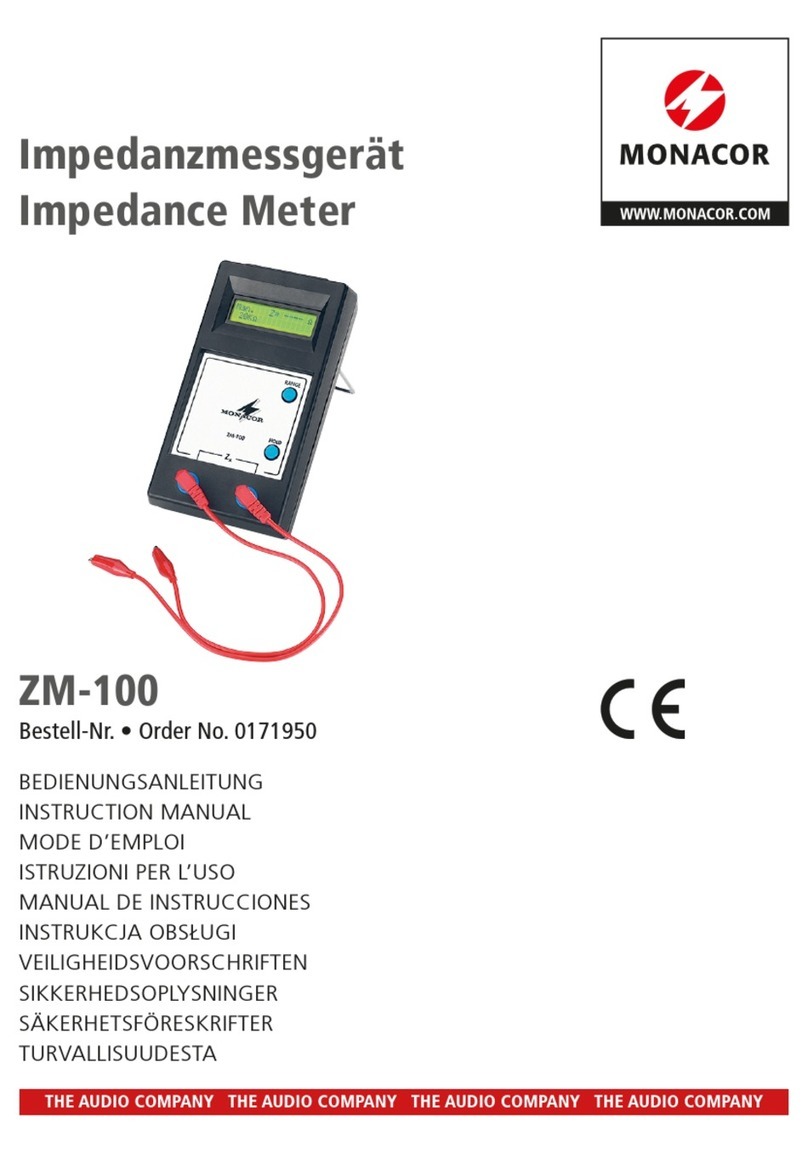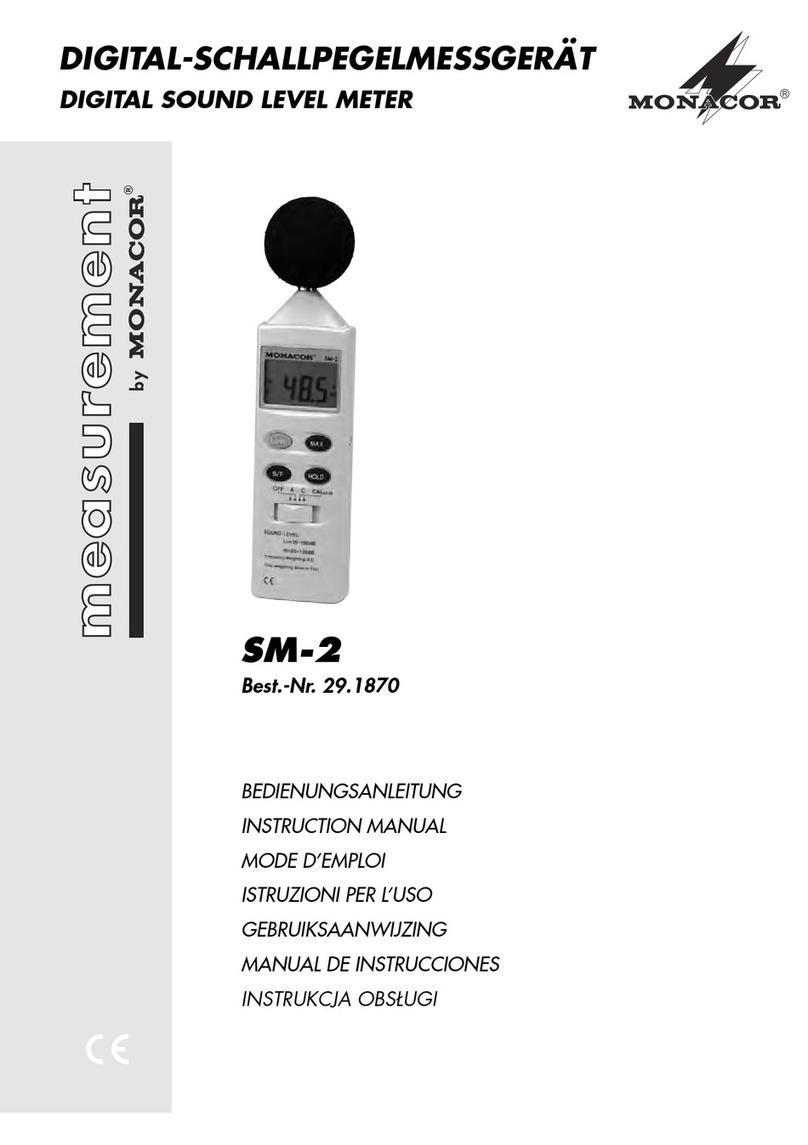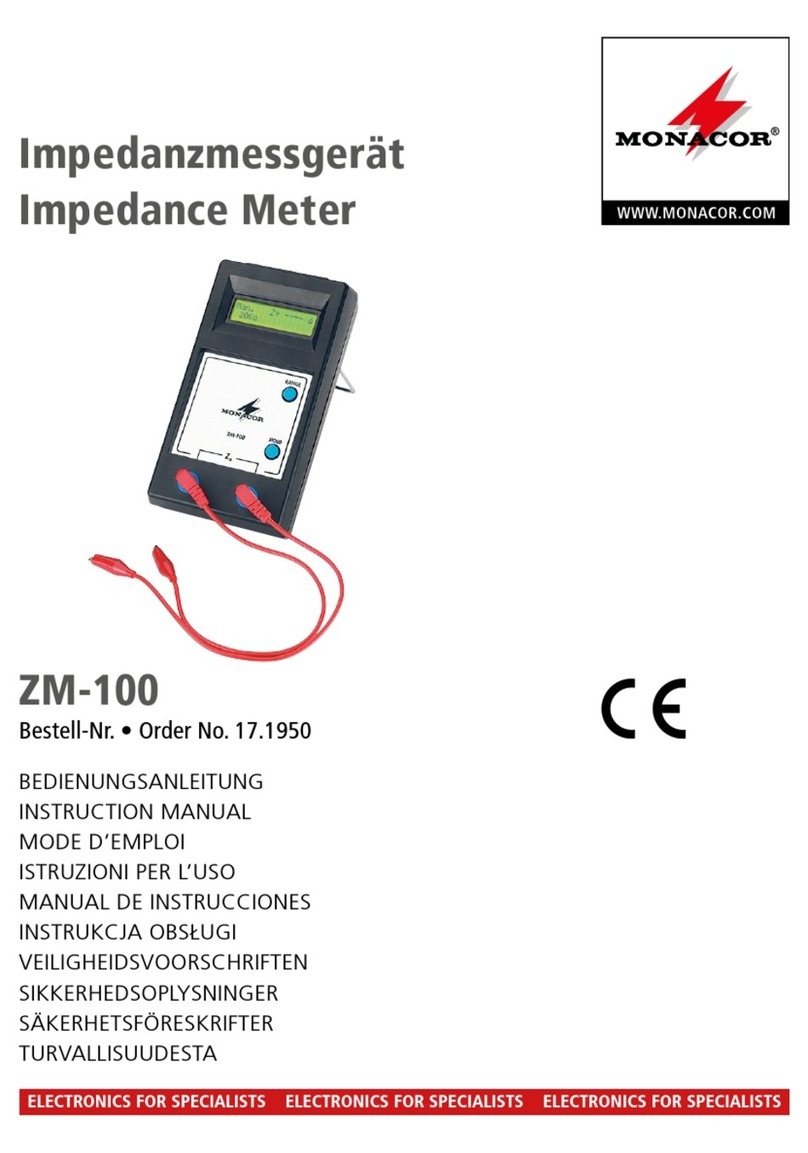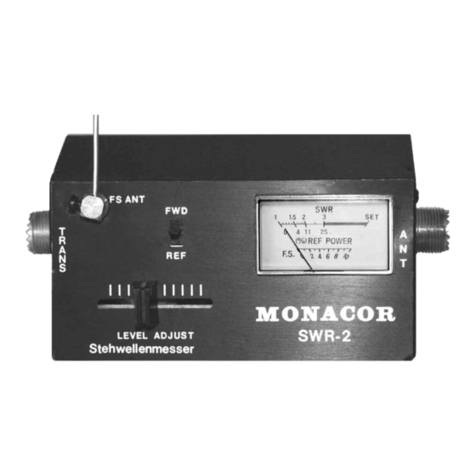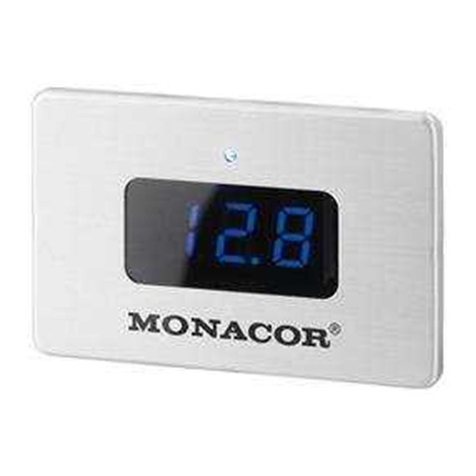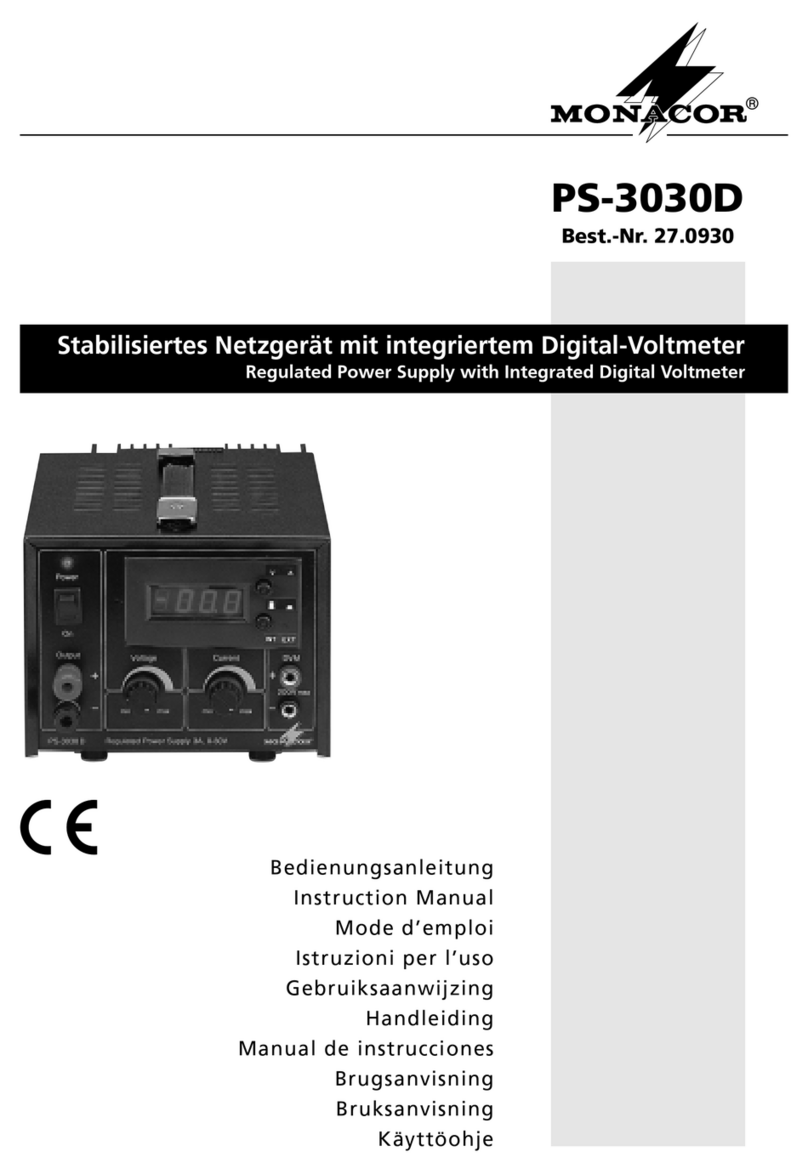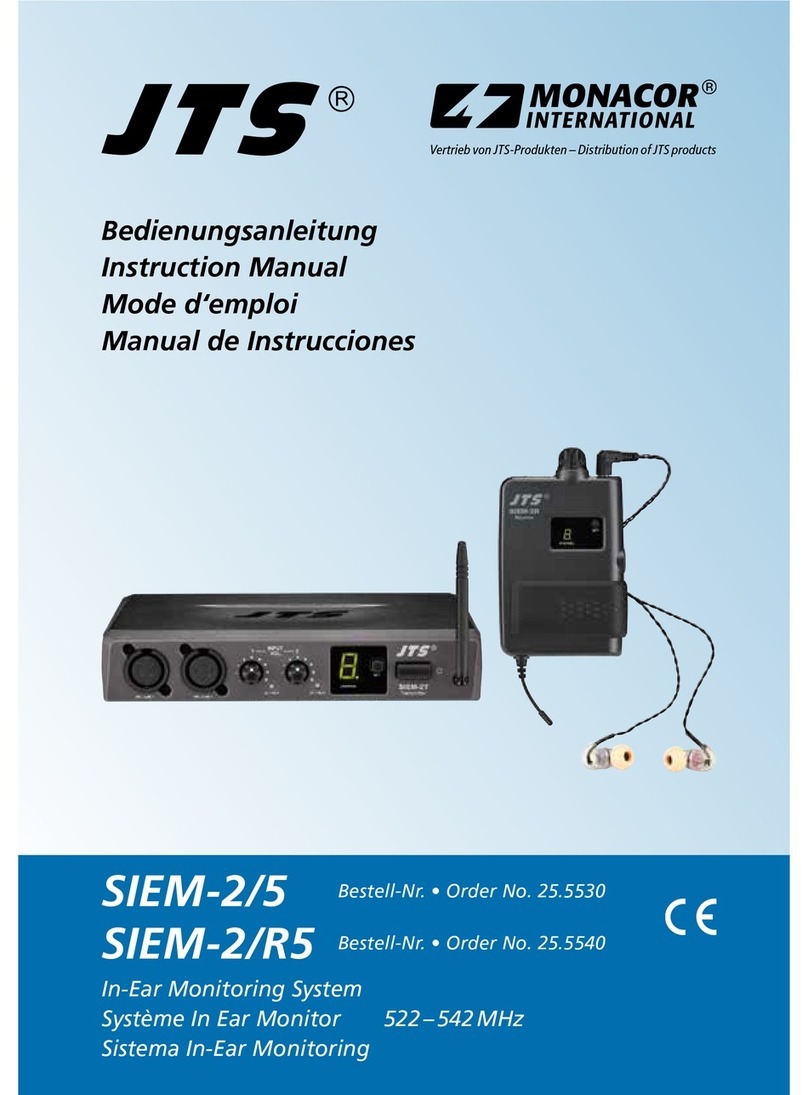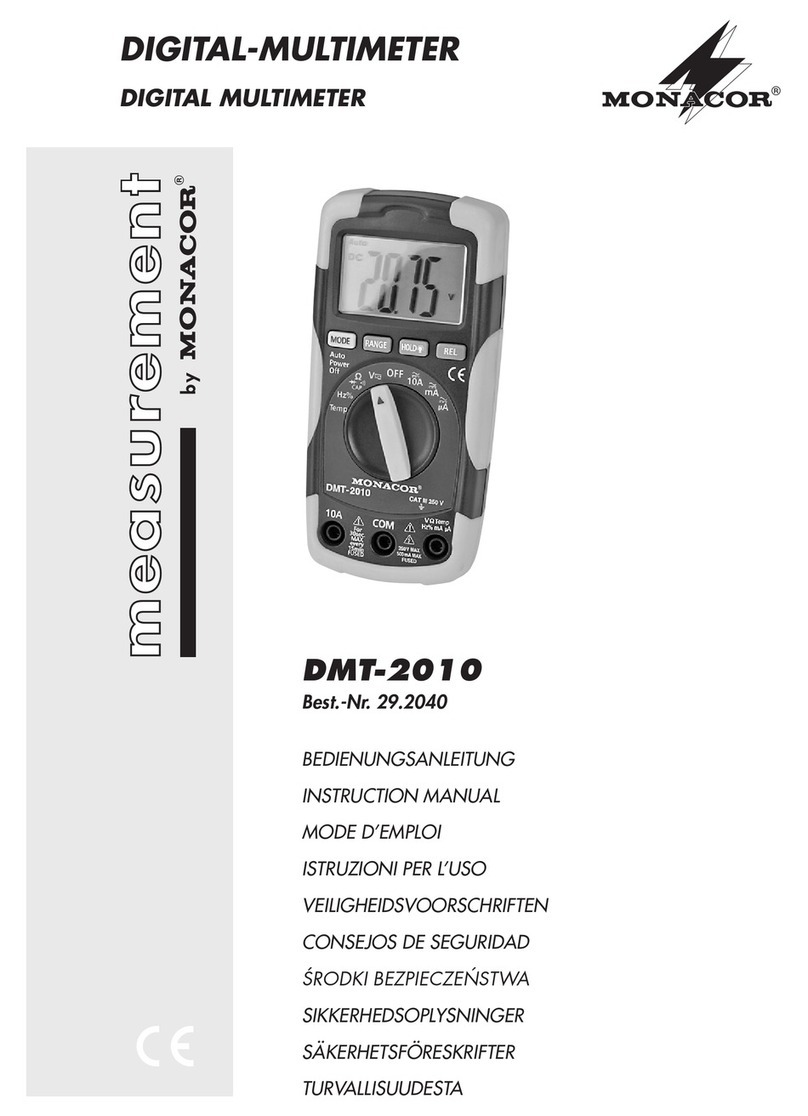GB
6
1 Applications
The measuring system LEVELMAX-1 serves for
monitoring and recording sound levels in high volume
environments (in discos, at dancing events, etc.). If
the limiting values previously defined are exceeded,
the system will give a warning by changing the colour
of its display background so that corresponding coun-
termeasures may be taken in time.
2 Safety Notes
The measuring system corresponds to the directive
for electromagnetic compatibility 89/336/EEC. The
power supply unit supplied also corresponds to the
low voltage directive 73/23/EEC.
Please observe the following items in any case:
●The system is suitable for indoor use only. Protect it
against dripping water and splash water, high air
humidity, and heat (admissible ambient tempera-
ture range 0–40°C).
●Do not operate the measuring box and immediately
disconnect the power supply unit from the mains
socket
1. in case of visible damage to the measuring box
or to the power supply unit,
2. if a defect might have occurred after the unit was
dropped or suffered a similar accident,
3. if malfunctions occur.
In any case the system must be repaired by skilled
personnel.
●As long as the power supply unit is connected to a
live socket, it will have a low current consumption.
●For cleaning only use a dry, soft cloth; never use
chemicals or water.
●No guarantee claims for the measuring system and
no liability for any resulting personal damage or
material damage will be accepted if the measuring
system is used for other purposes than originally
intended, if it is not correctly connected, operated,
or not repaired in an expert way, or if the software is
not correctly installed.
3 Scope of Delivery
–measuring box LEVELMAX-1
–plug-in power supply unit 9V /260mA
–measuring microphone with 33m connection cable,
BNC plug connection
–2m audio connection cable
with 2 x 3.5mm mono plug
–programme CD with the software dBmess Disco
and two audio test signals
4 Connection
1) Connect the BNC plug of the cable of the measur-
ing microphone to the BNC jack of the LEVEL-
MAX-1 measuring box and lock it.
2) With the audio connection cable, connect the
3.5mm output of the measuring box to an audio
input of the computer. Usually, the microphone
input may be used. In exceptional cases, use the
line input if the sensitivity of the microphone input
is too high.
Important: In the software setting for the sound
card, activate the audio input used and deactivate
all other inputs.
3) Connect the plug-in power supply unit to the low-
voltage jack of the measuring box and to a mains
socket (230V~/50Hz).
4) Switch on the measuring box with the Power/
Reset switch.
Note: In case of power interruptions of less than
3seconds, e.g. by mains failure, actuate the Pow-
er/Reset switch to restore the correct operating
state of the measuring box. In case of longer inter-
ruptions, e.g. if the unit was switched off between
two measurements via a main switch, the unit will
automatically return to the correct operating state.
5 Software Installation
The measuring programme can be operated on a
PC with a Windows®operating system (from Win-
dows®98) and an integrated sound card.
1) Insert the programme CD into the corresponding
driveof the computer and start the file“SETUP.EXE”
via the Windows®Explorer. Then follow the installa-
tion instructions. The serial number to be entered
can be found on the label of the CD cover.
It is recommended to include the programme in
the Autostart folder.
2) After successful installation, start the programme
“dBmess Disco.exe”.
3) The menu languages available are German, Eng-
lish, and French. Select a language in the menu
“Language”. The programme help (to be called with
the key F1), however, is available in German only.
6 System Calibration
First always perform a single calibration at the place
where the sound level is to be monitored. This cali-
bration depends on the kind of later measurement:
1. Direct measurement: The sound level is meas-
ured directly at the place where the sound level is
to be monitored, e.g. at ear level in the centre of
the dance floor. For this purpose, proceed as
described in chapter 6.1.
2. Indirect measurement: If the microphone is in the
way when set up directly at the place where the
sound level is to be monitored, move it to a dif-
ferent place after measuring a reference value,
e.g. to the edge of the dance floor. In this case,
proceed as described in chapter 6.2.
If the measuring system is to be put out of
operation definitively, take it to a local
recycling plant for a disposal which is not
harmful to the environment.
WARNING The plug-in power supply unit is sup-
plied with hazardous mains voltage
(230V~). Never make any modification
on the power supply unit, otherwise you
will risk an electric shock.
